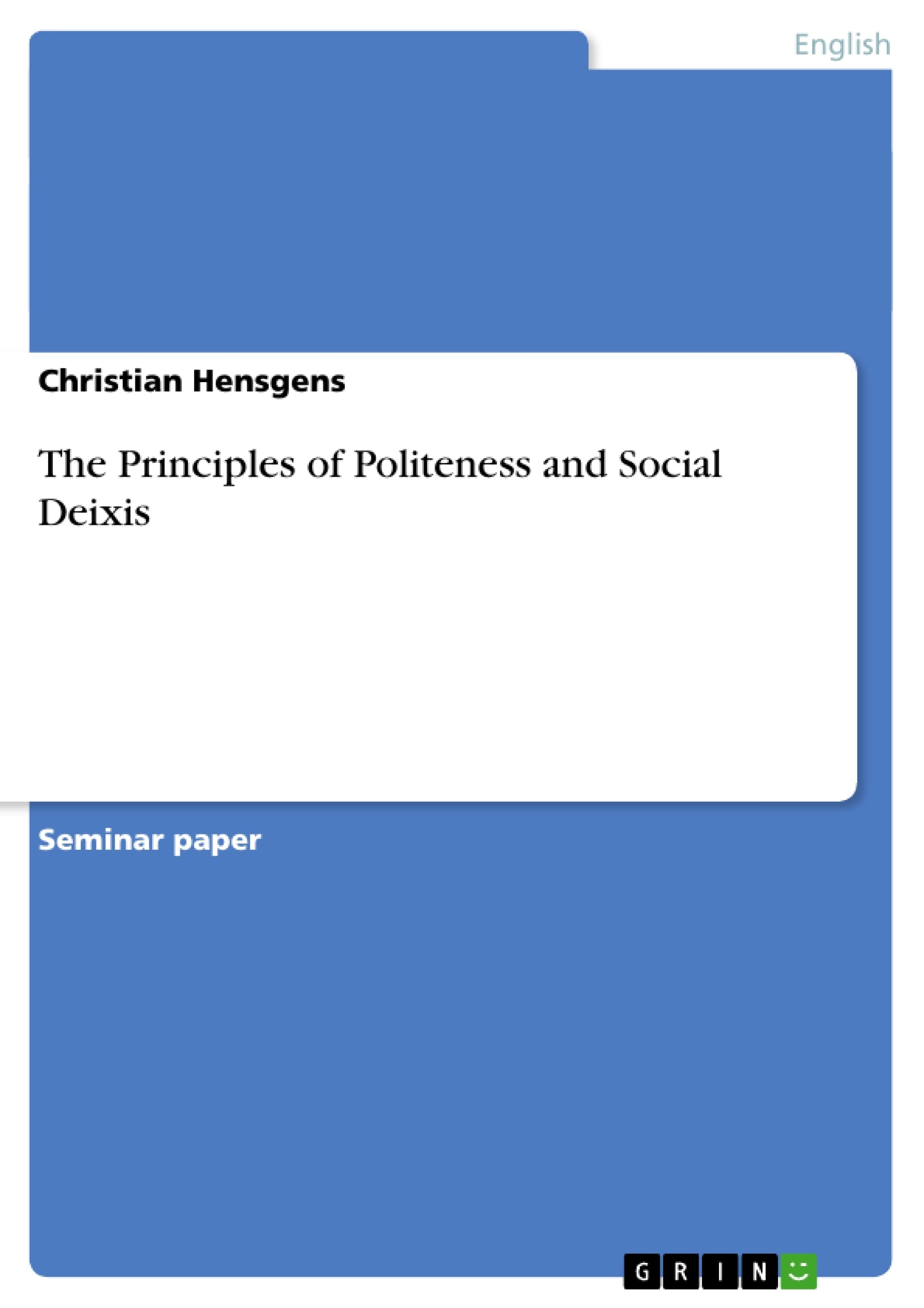„Have a look over there! You will have to do that next week.“ If we wanted to follow and to join this conversation, we would need to know different pieces of information from the extralinguistic context: Where and when did the action take place? And finally, who are the speaker and the addressee? The tokens “there”, “you”, “that”, and “next week” can be described as deictic expressions or - for short - deictics (THOMAS 1995: 9). The term “deictic expression” comes from the Greek word deiktikós (“pointing at”) (BUßMANN 2002: 149). Lyons defines deixis to be “the location and identification of persons, objects, events, processes, and activities being talked about, or referred to, in relation to the spatiotemporal context created and sustained by the act of utterance and the participation in it, typically, of a single speaker and at least one addressee” (JARVELLA / KLEIN 1982: 35).
We are frequently faced with deictic expressions in everyday-languagewhether consciously or unconsciously - in the way that we refer to persons, places, times, and various different other things. Thereby, we would receive a demand such as “Do this!” or “Keep out!” as much more rude and aggressive than a - more politely
- demand such as “Would you mind to do this?” or “Please, do not disturb”. Obviously, we are able to feel the delicate differences between both demands while speaking and we seem to be able to make adequate use of these differences. Why is that so? Why do we receive two demands with quite the same content in different ways? What are these differences like, how are they received, and which advantages does a speaker gain from either using the one expression or the other? It seems that deixis and politeness are connected in a way and that the use of different deictic expressions also has different effects on the politeness expressed through these deictic expressions. Insofar, it can be stated that we are just on the interface between deixis and politeness.
My aims are to find answers to the questions above, to give an overview of the prevailing politeness principles, and to draw a connection to social deixis in particular. I will first organize the different categories of deixis and then concentrate on the politeness principles developed by Brown and Levinson.
Table of Contents
- Introduction
- The different categories of deixis
- Local deixis
- Temporal deixis
- Person deixis
- Discourse deixis
- Situation deixis
- Social deixis
- The principles of conversation
- Politeness
- Face
- Face threatening acts (FTAs)
- The strategies of face threatening acts
- About the connection between social deixis and politeness
- Conclusion
Objectives and Key Themes
The objective of this paper is to explore the relationship between deixis and politeness, analyzing how different deictic expressions impact the perceived politeness of utterances. The author aims to provide an overview of prevailing politeness principles, particularly focusing on the model developed by Brown and Levinson.
- The different categories of deixis and their role in language
- The principles of politeness as established by Brown and Levinson
- The connection between social deixis and politeness principles
- The impact of deictic expressions on the perceived politeness of utterances
- The interplay between language and social context in shaping meaning and communication
Chapter Summaries
The paper starts by introducing the concept of deixis, highlighting how deictic expressions rely on contextual information for their interpretation. This introduction sets the stage for exploring the connection between deixis and politeness.
The second chapter examines the different categories of deixis, including local, temporal, person, discourse, situation, and social deixis. Each category is defined and discussed with relevant examples.
The third chapter delves into the principles of conversation, particularly focusing on the concept of politeness as developed by Brown and Levinson. The author introduces the notion of "face" and its relevance to politeness, explaining how face-threatening acts (FTAs) are managed through different strategies.
The fourth chapter explores the connection between social deixis and politeness, highlighting how the use of different deictic expressions can impact the perceived politeness of utterances. This chapter provides insights into the intricate relationship between language, social context, and politeness.
Keywords
Key terms and concepts explored in the paper include deixis, politeness, social deixis, face, face-threatening acts (FTAs), Brown and Levinson's politeness model, deictic expressions, context of utterance, speech act theory, and the impact of language on social interaction.
- Quote paper
- Christian Hensgens (Author), 2005, The Principles of Politeness and Social Deixis, Munich, GRIN Verlag, https://www.grin.com/document/35036




